 A Kelowna transport company has put one of the first natural gas trucks powered by the Cummins X15N engine into action. Nortrans is using a Kenworth T880 to transport shipments for Gorman Bros. Lumber between Revelstoke and Oroville, Wash., carrying the same heavy payloads as diesel-powered units while producing far fewer emissions. The Kenworth T880 was the result of a project featuring many participants, including Natural Resources Canada, Kenworth and Inland Kenworth, Cummins, Eaton Transmissions, Gorman Bros. Lumber, FortisBC and Clean Energy.“At FortisBC, we have been working to move away from diesel and toward lower carbon fuels such as compressed natural gas,” FortisBC manager Della Bond said. …FortisBC said natural gas vehicles, compared to those powered by diesel, produce up to 95% fewer nitrogen oxides, up to 30% fewer greenhouse gas and virtually no particulate matter.
A Kelowna transport company has put one of the first natural gas trucks powered by the Cummins X15N engine into action. Nortrans is using a Kenworth T880 to transport shipments for Gorman Bros. Lumber between Revelstoke and Oroville, Wash., carrying the same heavy payloads as diesel-powered units while producing far fewer emissions. The Kenworth T880 was the result of a project featuring many participants, including Natural Resources Canada, Kenworth and Inland Kenworth, Cummins, Eaton Transmissions, Gorman Bros. Lumber, FortisBC and Clean Energy.“At FortisBC, we have been working to move away from diesel and toward lower carbon fuels such as compressed natural gas,” FortisBC manager Della Bond said. …FortisBC said natural gas vehicles, compared to those powered by diesel, produce up to 95% fewer nitrogen oxides, up to 30% fewer greenhouse gas and virtually no particulate matter.
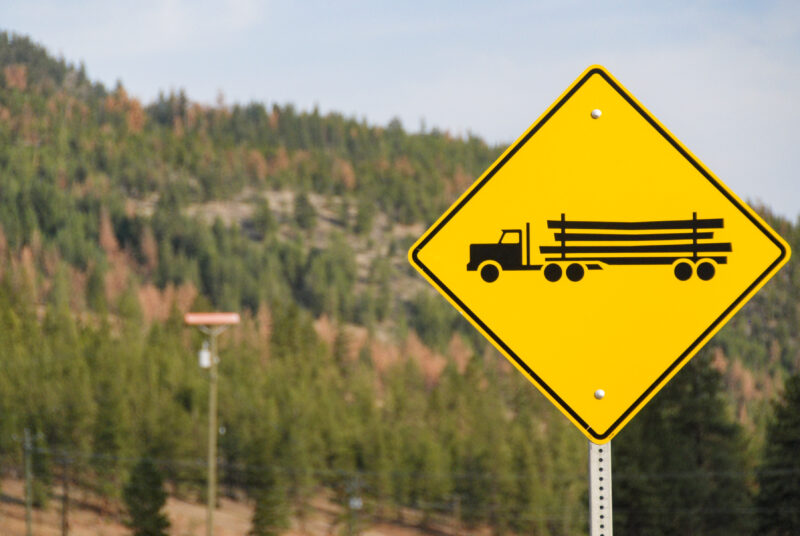 VICTORIA — Forests Minister Ravi Parmar this week announced major reforms to B.C. Timber Sales, hoping to reverse a two-thirds decline in sales volumes under the NDP. …Parmar said the government will broaden the agency’s mandate to focus on providing wood to support manufacturing, delivering jobs to communities and building partnerships with First Nations. The changes are prompted by a review conducted earlier this year by former B.C. Liberal cabinet minister George Abbott, Vanderhoof councillor Brian Frenkel and First Nations representative Lennard Joe. …Parmar didn’t understate the urgency of delivering logs to all the right places … that day’s Merritt Herald announced Aspen Planer mill was closing for “an indefinite period.” …The company doesn’t lack for wood supply on paper. …For all Parmar’s and Eby’s enthusiasm for boosting the annual harvest, they have not made believers of the Ministry of Finance in their own government.
VICTORIA — Forests Minister Ravi Parmar this week announced major reforms to B.C. Timber Sales, hoping to reverse a two-thirds decline in sales volumes under the NDP. …Parmar said the government will broaden the agency’s mandate to focus on providing wood to support manufacturing, delivering jobs to communities and building partnerships with First Nations. The changes are prompted by a review conducted earlier this year by former B.C. Liberal cabinet minister George Abbott, Vanderhoof councillor Brian Frenkel and First Nations representative Lennard Joe. …Parmar didn’t understate the urgency of delivering logs to all the right places … that day’s Merritt Herald announced Aspen Planer mill was closing for “an indefinite period.” …The company doesn’t lack for wood supply on paper. …For all Parmar’s and Eby’s enthusiasm for boosting the annual harvest, they have not made believers of the Ministry of Finance in their own government.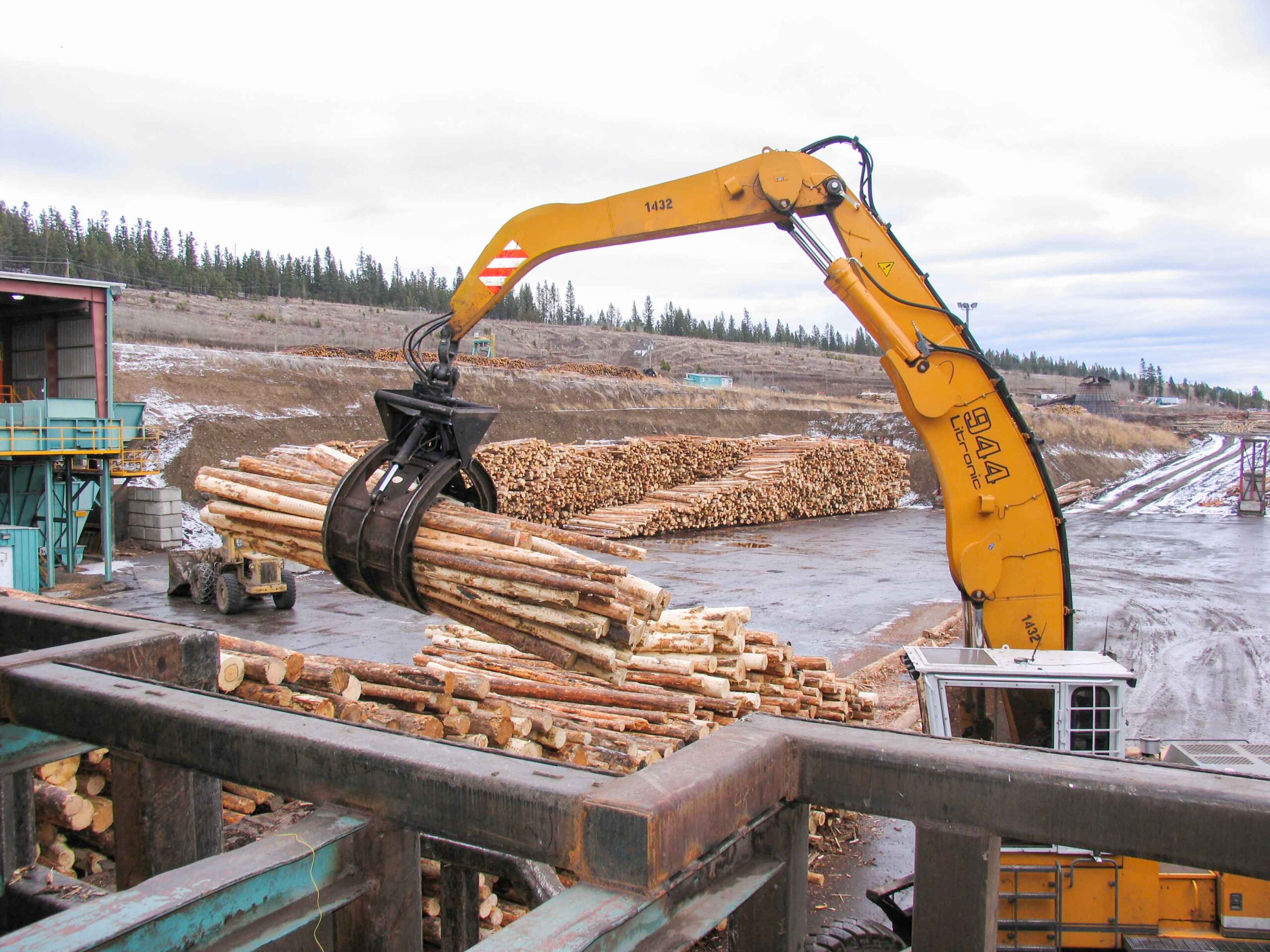 The B.C. Government says it’s going to expand the scope of BC Timber Sales. The organization manages 20 per cent of the province’s allowable annual cut for Crown/public timber and the auction of public timber. The government released a review of BC Timber Sales on Tuesday… A Chemainus mill is among two Western Forest Products mills in the Cowichan Valley facing lengthy curtailments, impacting more than 200 workers. …At the Paulcan Jemico mills in Chemainus, there are 50 people working despite tough times for the industry. The owner says profit margins are razor-thin while regulations are always increasing. “We’re making it to the point where no one wants to do business because there is so much uncertainty in what goes on in this industry,” said Paul Beltgens, owner of Paulcan Jemico Industries. Beltgens says unless conditions improve, there’s very little reason to invest in his company’s operations for the future.
The B.C. Government says it’s going to expand the scope of BC Timber Sales. The organization manages 20 per cent of the province’s allowable annual cut for Crown/public timber and the auction of public timber. The government released a review of BC Timber Sales on Tuesday… A Chemainus mill is among two Western Forest Products mills in the Cowichan Valley facing lengthy curtailments, impacting more than 200 workers. …At the Paulcan Jemico mills in Chemainus, there are 50 people working despite tough times for the industry. The owner says profit margins are razor-thin while regulations are always increasing. “We’re making it to the point where no one wants to do business because there is so much uncertainty in what goes on in this industry,” said Paul Beltgens, owner of Paulcan Jemico Industries. Beltgens says unless conditions improve, there’s very little reason to invest in his company’s operations for the future.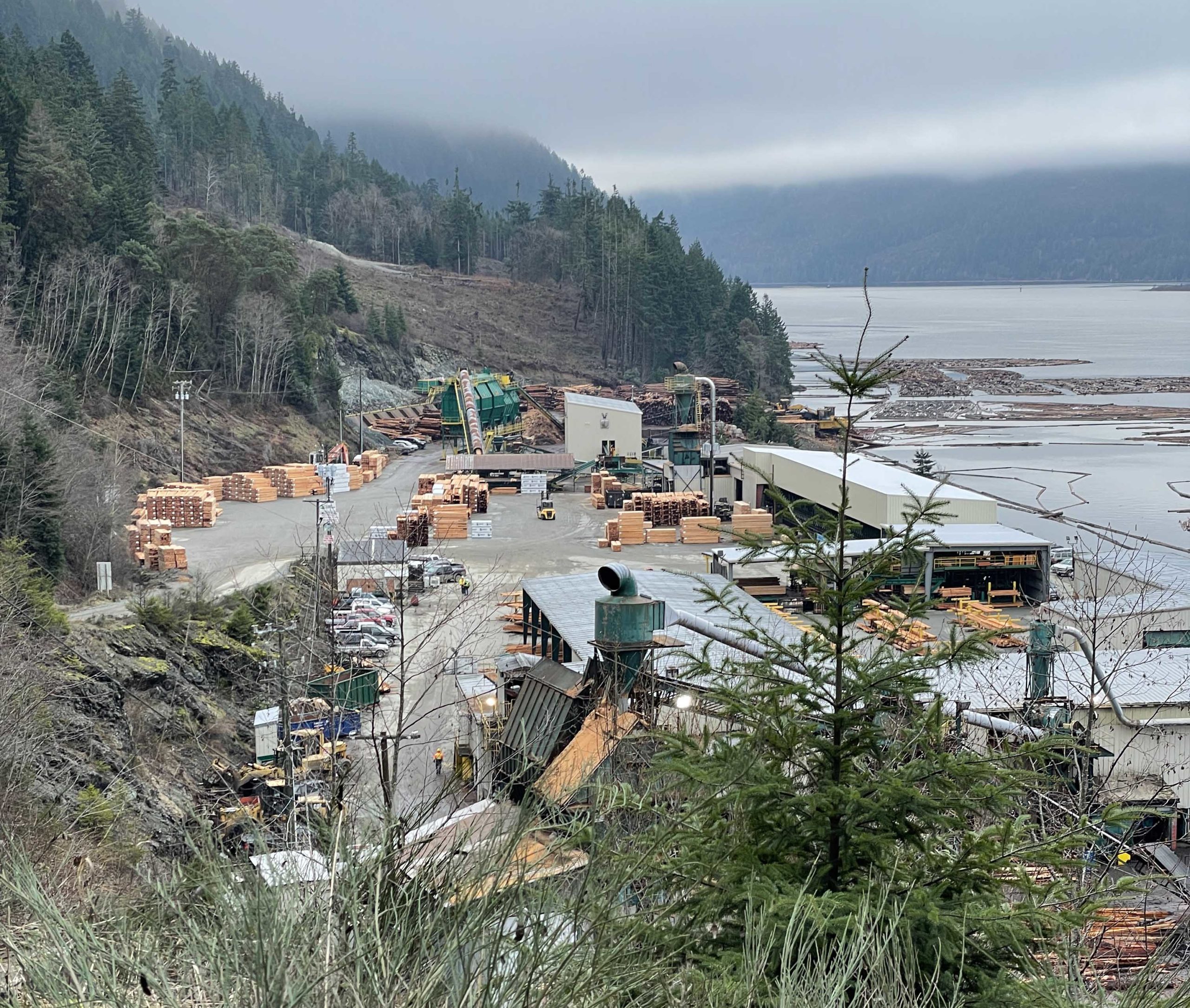 The new owners of the Coulson Manufacturing Mill (formerly operated by the San Group) say they are anxious to get the mill back up and running after purchasing the Port Alberni facility in a court-approved sale in June of this year. The mill will act as a stand-alone operation named Coulson Sawmills and will be managed by Jovan and Ajit Gill, but are connected at arms length with Fraserview Cedar on the Lower Mainland. “This is the next generation of Gills that have bought this and their plan is to go up there and get their own relationship,” says Fraserview Chief Executive Officer Gary Gill. Plans are to get the operation going near the beginning of November but the company’s first priority is to build up a long-term log deck so that the mill can run continuously with a healthy supply of logs. That’s a problem that Gary Gill says is facing other mills as well.
The new owners of the Coulson Manufacturing Mill (formerly operated by the San Group) say they are anxious to get the mill back up and running after purchasing the Port Alberni facility in a court-approved sale in June of this year. The mill will act as a stand-alone operation named Coulson Sawmills and will be managed by Jovan and Ajit Gill, but are connected at arms length with Fraserview Cedar on the Lower Mainland. “This is the next generation of Gills that have bought this and their plan is to go up there and get their own relationship,” says Fraserview Chief Executive Officer Gary Gill. Plans are to get the operation going near the beginning of November but the company’s first priority is to build up a long-term log deck so that the mill can run continuously with a healthy supply of logs. That’s a problem that Gary Gill says is facing other mills as well.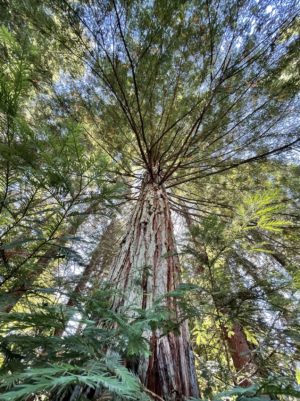 CAMPBELL RIVER — Several mayors from across BC have united to advocate for resource development by creating the Alliance of Resource Communities, with Campbell River’s mayor at the helm. “It’s time for an alliance of community leaders from all corners of the province to come together and strongly advocate for a secure and brighter economic future through the responsible development of our abundant natural resources,” said Mayor Kermit Dahl at the Get it Done conference on Sept. 22, which was hosted by Resource Works. “While it’s encouraging that the federal and provincial governments are becoming more vocal in support of major projects, thousands of people in my community who rely on natural resource industries face an uncertain future,” said Dahl, referring to Prime Minister Mark Carney’s pledge to fast-track nation-building projects and the recent announcement of five major infrastructure projects.
CAMPBELL RIVER — Several mayors from across BC have united to advocate for resource development by creating the Alliance of Resource Communities, with Campbell River’s mayor at the helm. “It’s time for an alliance of community leaders from all corners of the province to come together and strongly advocate for a secure and brighter economic future through the responsible development of our abundant natural resources,” said Mayor Kermit Dahl at the Get it Done conference on Sept. 22, which was hosted by Resource Works. “While it’s encouraging that the federal and provincial governments are becoming more vocal in support of major projects, thousands of people in my community who rely on natural resource industries face an uncertain future,” said Dahl, referring to Prime Minister Mark Carney’s pledge to fast-track nation-building projects and the recent announcement of five major infrastructure projects.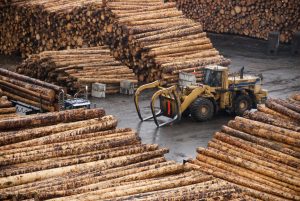 British Columbia’s forestry industry is “under pressure from all sides,” prompting the provincial government to bring in changes to expand the role of BC Timber Sales, including allowing some communities to manage their own forest resources. Forests Minister Ravi Parmar says attacks from US President Trump, “increasingly intense” wildfires and climate change all put extra pressure on the industry. A review of the work done by BC Timber Sales, an organization that manages 20% of Crown timber, has generated 54 recommendations in a plan to help support a thriving forest economy. One of the key recommendations includes expanding three community forests in Vanderhoof, Fraser Lake and Fort St. James. …Parmar said he wants the changes implemented as quickly as possible, but a number of them will require legislative change to move forward. Parmar said the B.C. forestry sector is also looking to expand into other foreign markets.
British Columbia’s forestry industry is “under pressure from all sides,” prompting the provincial government to bring in changes to expand the role of BC Timber Sales, including allowing some communities to manage their own forest resources. Forests Minister Ravi Parmar says attacks from US President Trump, “increasingly intense” wildfires and climate change all put extra pressure on the industry. A review of the work done by BC Timber Sales, an organization that manages 20% of Crown timber, has generated 54 recommendations in a plan to help support a thriving forest economy. One of the key recommendations includes expanding three community forests in Vanderhoof, Fraser Lake and Fort St. James. …Parmar said he wants the changes implemented as quickly as possible, but a number of them will require legislative change to move forward. Parmar said the B.C. forestry sector is also looking to expand into other foreign markets.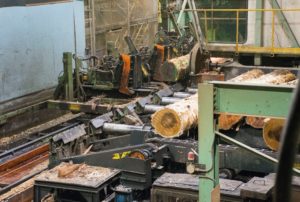 MERRITT, BC — Aspen Planers has halted operations at its Merritt sawmill and planer facility for an undetermined period, citing what it calls a lack of available logs and rising costs that have made continued production unsustainable. “Simply put, our mill lacks logs,” said regional manager Surinder Momrath. “Our Lillooet veneer plant has also curtailed operations for the same reason. These two closures are linked given that we source logs from both our Merritt and Lillooet forest licenses – and the saw logs are processed in Merritt while the plywood ‘peeler’ logs are processed in Lillooet.” The company pointed to an inability to obtain cutting permits under its AAC. Aspen Planers’ licenses provide for 490,000 cubic metres, but over the past two and a half years the company has only harvested 29% of that amount. …He says the shortage stems from provincial policy decisions, including Indigenous co-governance under DRIPA and old growth initiatives.
MERRITT, BC — Aspen Planers has halted operations at its Merritt sawmill and planer facility for an undetermined period, citing what it calls a lack of available logs and rising costs that have made continued production unsustainable. “Simply put, our mill lacks logs,” said regional manager Surinder Momrath. “Our Lillooet veneer plant has also curtailed operations for the same reason. These two closures are linked given that we source logs from both our Merritt and Lillooet forest licenses – and the saw logs are processed in Merritt while the plywood ‘peeler’ logs are processed in Lillooet.” The company pointed to an inability to obtain cutting permits under its AAC. Aspen Planers’ licenses provide for 490,000 cubic metres, but over the past two and a half years the company has only harvested 29% of that amount. …He says the shortage stems from provincial policy decisions, including Indigenous co-governance under DRIPA and old growth initiatives.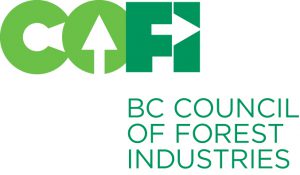 “The BC Council of Forest Industries (COFI)… is encouraged to see recognition of the urgency to ‘increase performance, move more fibre, and better serve the current client base, including the primary sector.’ To create the stability, certainty, and predictability needed, we urge government to prioritize and fast track the Task Force’s recommendations that focus on increasing wood flow to manufacturers across the province. While BCTS has consistently underperformed in its core function of delivering wood supply to the market, the government is choosing to expand its mandate and propose additional volumes be allocated to BCTS. …COFI is pleased to see harvest targets in Recommendation 17, however, the proposal to increase the BCTS volumes by only 1 million m³ per year is not ambitious enough to meet the government’s Major Project commitment to reach a 45 million m³ harvest.
“The BC Council of Forest Industries (COFI)… is encouraged to see recognition of the urgency to ‘increase performance, move more fibre, and better serve the current client base, including the primary sector.’ To create the stability, certainty, and predictability needed, we urge government to prioritize and fast track the Task Force’s recommendations that focus on increasing wood flow to manufacturers across the province. While BCTS has consistently underperformed in its core function of delivering wood supply to the market, the government is choosing to expand its mandate and propose additional volumes be allocated to BCTS. …COFI is pleased to see harvest targets in Recommendation 17, however, the proposal to increase the BCTS volumes by only 1 million m³ per year is not ambitious enough to meet the government’s Major Project commitment to reach a 45 million m³ harvest.
 The union representing thousands of forest-industry workers on the coast is calling for a united effort to address a growing crisis in the sector. Brian Butler, president of United Steelworkers Local 1-1937, says government, industry, First Nations and the union need a plan to resolve the issues that remain under the province’s control. He said members of the union, which represents 5,500 workers on the coast, are being hit hard with layoffs, most of which are either due to market conditions or lack of available logs. “Right now, as we see it, stakeholders work independently in their own silos, rather than collectively,” he said. On Monday, Western Forest Products, which supports about 3,300 jobs on the coast, announced that curtailments at its Chemainus sawmill will be extended until the end of the year. …Butler said there are plenty more examples of trouble in the sector around the Island.
The union representing thousands of forest-industry workers on the coast is calling for a united effort to address a growing crisis in the sector. Brian Butler, president of United Steelworkers Local 1-1937, says government, industry, First Nations and the union need a plan to resolve the issues that remain under the province’s control. He said members of the union, which represents 5,500 workers on the coast, are being hit hard with layoffs, most of which are either due to market conditions or lack of available logs. “Right now, as we see it, stakeholders work independently in their own silos, rather than collectively,” he said. On Monday, Western Forest Products, which supports about 3,300 jobs on the coast, announced that curtailments at its Chemainus sawmill will be extended until the end of the year. …Butler said there are plenty more examples of trouble in the sector around the Island. BURNABY, BC — Interfor announced that it has entered into an agreement with a syndicate of underwriters led by RBC Capital Markets and Scotiabank, under which the Underwriters have agreed to purchase, on a bought deal basis, 12,437,800 common shares of the Company at a price of $10.05 per Common Share for gross proceeds of $125 million. The Company has agreed to grant the Underwriters an over-allotment option to purchase up to an additional 15% of the Common Shares. …The Company intends to use the net proceeds of the Offering to pay down existing indebtedness and for general corporate purposes. …Proceeds of the Offering are expected to further enhance Interfor’s flexibility to navigate near-term market volatility. The Offering is scheduled to close on or about October 1, 2025.
BURNABY, BC — Interfor announced that it has entered into an agreement with a syndicate of underwriters led by RBC Capital Markets and Scotiabank, under which the Underwriters have agreed to purchase, on a bought deal basis, 12,437,800 common shares of the Company at a price of $10.05 per Common Share for gross proceeds of $125 million. The Company has agreed to grant the Underwriters an over-allotment option to purchase up to an additional 15% of the Common Shares. …The Company intends to use the net proceeds of the Offering to pay down existing indebtedness and for general corporate purposes. …Proceeds of the Offering are expected to further enhance Interfor’s flexibility to navigate near-term market volatility. The Offering is scheduled to close on or about October 1, 2025. Weakening U.S. housing construction has put another dark cloud over BC’s forest industry, increasing the likelihood of more mill shutdowns and layoffs. Lumber prices flatlined in recent weeks due to weak demand, just as new, higher duties in the Canada-U.S. softwood lumber dispute took effect. That means BC mills are operating at losses of up to US$220 per thousand board feet of two-by-fours, according to industry consultant Russ Taylor. …Taylor said market conditions during September are typically favourable for sawmills, but they’re decidedly negative this year. His forecast is that they will remain weak for the rest of the year, which will likely result in mills taking downtime. “We’re seeing it already,” said Kim Haakstad, CEO of the B.C. Council of Forest Industries. “We’re seeing temporary curtailments, we’re seeing extended holiday breaks, we’re seeing reconfigured shift schedules. …Haakstad said Parmar’s recognition of the urgency for change was encouraging.
Weakening U.S. housing construction has put another dark cloud over BC’s forest industry, increasing the likelihood of more mill shutdowns and layoffs. Lumber prices flatlined in recent weeks due to weak demand, just as new, higher duties in the Canada-U.S. softwood lumber dispute took effect. That means BC mills are operating at losses of up to US$220 per thousand board feet of two-by-fours, according to industry consultant Russ Taylor. …Taylor said market conditions during September are typically favourable for sawmills, but they’re decidedly negative this year. His forecast is that they will remain weak for the rest of the year, which will likely result in mills taking downtime. “We’re seeing it already,” said Kim Haakstad, CEO of the B.C. Council of Forest Industries. “We’re seeing temporary curtailments, we’re seeing extended holiday breaks, we’re seeing reconfigured shift schedules. …Haakstad said Parmar’s recognition of the urgency for change was encouraging.

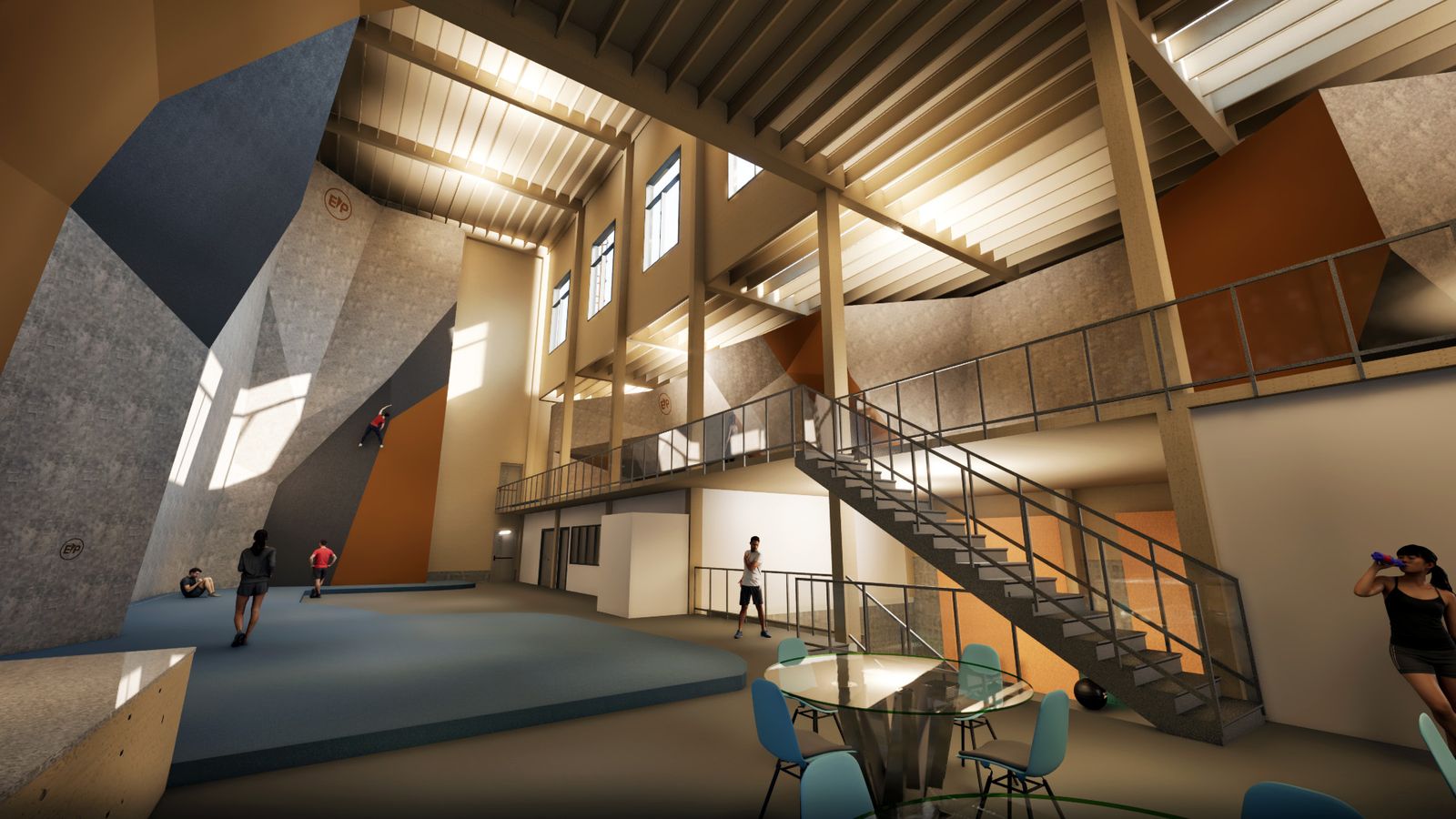
 Four new buildings in B.C. are each receiving $500,000 — totalling $2 million — to demonstrate and showcase the benefits of mass-timber construction. “Mass timber represents a transformative, locally sourced solution that’s generating significant employment opportunities, spurring cutting-edge innovation, and revitalizing rural economies across British Columbia,” said Ravi Kahlon, Minister of Jobs and Economic Growth. …The four projects were announced at the 2025 International Woodrise Congress. …Delivered through the Province’s Crown corporation Forestry Innovation Investment. The four projects are:
Four new buildings in B.C. are each receiving $500,000 — totalling $2 million — to demonstrate and showcase the benefits of mass-timber construction. “Mass timber represents a transformative, locally sourced solution that’s generating significant employment opportunities, spurring cutting-edge innovation, and revitalizing rural economies across British Columbia,” said Ravi Kahlon, Minister of Jobs and Economic Growth. …The four projects were announced at the 2025 International Woodrise Congress. …Delivered through the Province’s Crown corporation Forestry Innovation Investment. The four projects are:
 A proposed 18-storey residential tower on St. Paul Street in downtown Kelowna will be constructed using mass timber, according to applications recently submitted to city planners. The city announced earlier this year that it was partnering with non-profit developer Housing Okanagan Foundation on the project for middle-income earners. Now a development permit and variance applications have been submitted for the property at 1428 St. Paul St. “If completed today, it would be the tallest mass timber residential building in Canada,” according to the application from project architect Lang Wilson Practice in Architecture Culture. “The use of mass timber also offers significant reductions in embodied carbon emissions. “This design aligns with the provincial and federal housing objectives while also incubating a building construction methodology that creates local manufacturing jobs.” Above the three-storey podium will be 15 residential floors and a rooftop terrace for all tenants.
A proposed 18-storey residential tower on St. Paul Street in downtown Kelowna will be constructed using mass timber, according to applications recently submitted to city planners. The city announced earlier this year that it was partnering with non-profit developer Housing Okanagan Foundation on the project for middle-income earners. Now a development permit and variance applications have been submitted for the property at 1428 St. Paul St. “If completed today, it would be the tallest mass timber residential building in Canada,” according to the application from project architect Lang Wilson Practice in Architecture Culture. “The use of mass timber also offers significant reductions in embodied carbon emissions. “This design aligns with the provincial and federal housing objectives while also incubating a building construction methodology that creates local manufacturing jobs.” Above the three-storey podium will be 15 residential floors and a rooftop terrace for all tenants.




 In a career that has spanned nearly 40 years in the forestry industry, Michael McKay says he’s never had to face a situation like the one he’s staring at now. “This is probably one of the biggest, I mean with this fire and the current state of the industry, to have it all come together at once, it’s definitely about as tough as it’s been,” McKay said. The president of Franklin Forest Products is facing a perfect storm of problems but is pivoting as best he can to weather through it. The latest issue was the Mount Underwood Fire which started Aug. 11 and ended up destroying half of the company’s powerline despite his employees trying to save it. …The blaze interrupted the implementation of a new Gang Mill plant that would have added more staff to the company’s roster of 35 employees. …”It’s been four years and wood’s not coming out, there’s just no wood coming out of the bush and all we are is a bunch of too many squirrels chasing too few nuts,” McKay said.
In a career that has spanned nearly 40 years in the forestry industry, Michael McKay says he’s never had to face a situation like the one he’s staring at now. “This is probably one of the biggest, I mean with this fire and the current state of the industry, to have it all come together at once, it’s definitely about as tough as it’s been,” McKay said. The president of Franklin Forest Products is facing a perfect storm of problems but is pivoting as best he can to weather through it. The latest issue was the Mount Underwood Fire which started Aug. 11 and ended up destroying half of the company’s powerline despite his employees trying to save it. …The blaze interrupted the implementation of a new Gang Mill plant that would have added more staff to the company’s roster of 35 employees. …”It’s been four years and wood’s not coming out, there’s just no wood coming out of the bush and all we are is a bunch of too many squirrels chasing too few nuts,” McKay said.
 Can the problems of wildfire and forestry industry setbacks be solved at once? …It will be a tough goal, especially with the Province’s timber supply forecast not projecting timber supply to turn in a positive direction until 2060. …The forest industry has been attempting to fight this every year. For wildfires, the BC Wildfire Service (BCWS) have adopted techniques, such as prescribed burnings, to try and mitigate the intense wildfire seasons. …One way is the more novel practice of harnessing the manpower of the logging industry. Nick Reynolds, acting director of investigations at the BC Forest Practices Board, was involved in two recent special investigations from the FPB on wildfire mitigation. …“Why don’t we use that engine and muscle (of the forestry industry)” Reynolds said. …Jason Fisher, executive director of FESBC, said that through their funding platform, they’ve seen workers who’ve specialized in traditional logging take on WRR work.
Can the problems of wildfire and forestry industry setbacks be solved at once? …It will be a tough goal, especially with the Province’s timber supply forecast not projecting timber supply to turn in a positive direction until 2060. …The forest industry has been attempting to fight this every year. For wildfires, the BC Wildfire Service (BCWS) have adopted techniques, such as prescribed burnings, to try and mitigate the intense wildfire seasons. …One way is the more novel practice of harnessing the manpower of the logging industry. Nick Reynolds, acting director of investigations at the BC Forest Practices Board, was involved in two recent special investigations from the FPB on wildfire mitigation. …“Why don’t we use that engine and muscle (of the forestry industry)” Reynolds said. …Jason Fisher, executive director of FESBC, said that through their funding platform, they’ve seen workers who’ve specialized in traditional logging take on WRR work.

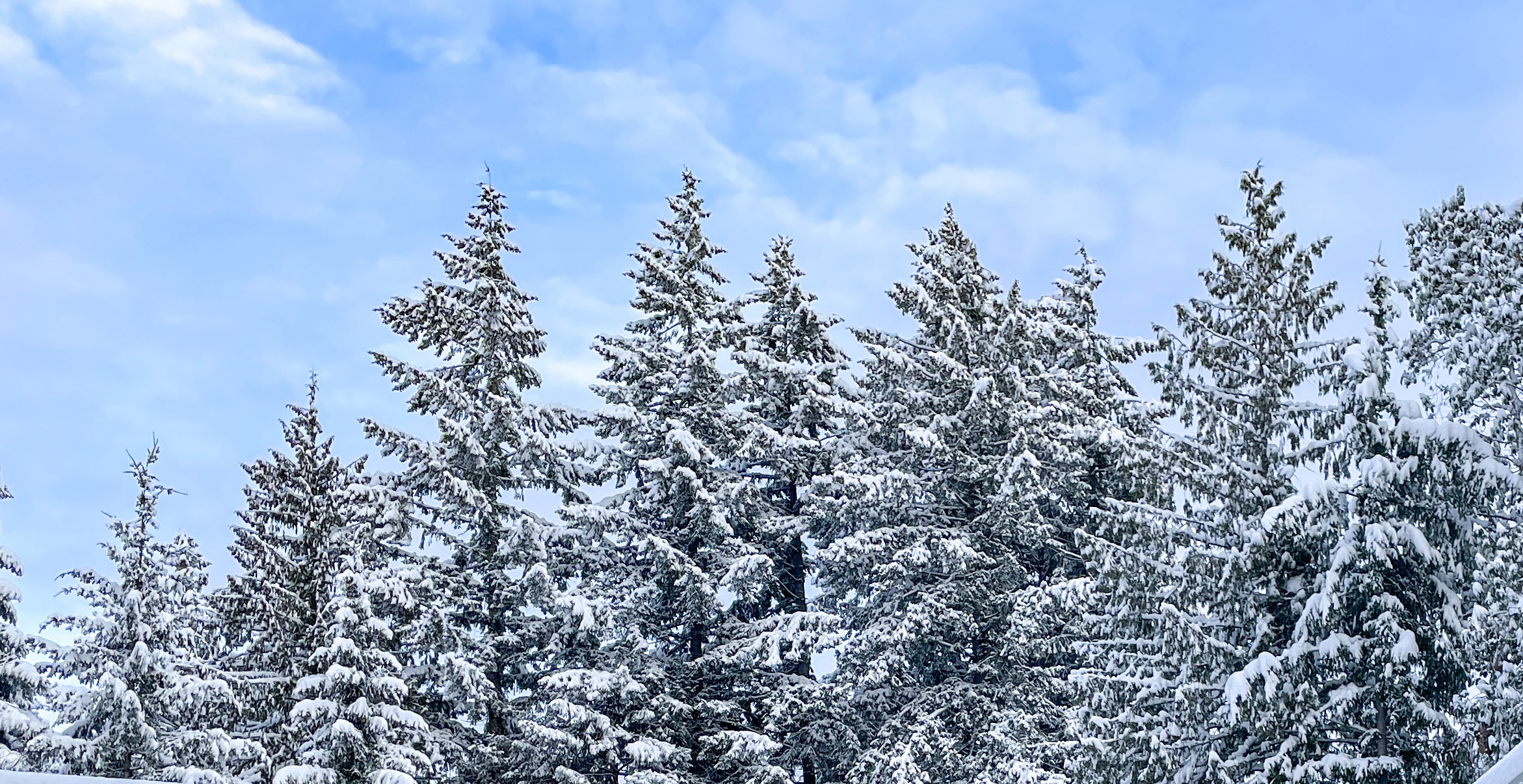 Less wildfire damage throughout the province and improved access to the great outdoors feature prominently in Danielle Smith’s renewed vision for Alberta. The premier issued new marching orders last week to Forestry and Parks Minister Todd Loewen, directing him to expand efforts to prevent wildfires and reduce their effects. One bullet point is that the minister seek a wildfire agreement with the federal government. Loewen said wildfire fighting and prevention are “incredibly important to Albertans.” So is more access to public lands in a sustainable way. “Those two things encompass a lot of what’s in the mandate letter, and I think they really resonate well with Albertans,” said Loewen, the member for Central Peace-Notley in the province’s northwest. He was one of four ministers to receive new mandate letters on Sept. 17.
Less wildfire damage throughout the province and improved access to the great outdoors feature prominently in Danielle Smith’s renewed vision for Alberta. The premier issued new marching orders last week to Forestry and Parks Minister Todd Loewen, directing him to expand efforts to prevent wildfires and reduce their effects. One bullet point is that the minister seek a wildfire agreement with the federal government. Loewen said wildfire fighting and prevention are “incredibly important to Albertans.” So is more access to public lands in a sustainable way. “Those two things encompass a lot of what’s in the mandate letter, and I think they really resonate well with Albertans,” said Loewen, the member for Central Peace-Notley in the province’s northwest. He was one of four ministers to receive new mandate letters on Sept. 17. [Recent] articles in the Campbell River Mirror during Forestry Week, “Celebrating the role of First Nations in the forestry economy,” and “Mayor calls for urgent action to support forest industry,” deserve some context and reply from someone like myself who is directly in the crosshairs as a forest industry worker. …I work for La-kwa sa muqw Forestry Ltd., a majority-owned Western Forest Products company. And, as a union member, I am on strike. However, I am expressing my opinion only. …The article on the First Nations’ role in forestry is positive and forward-looking to a point. … On the face of it, you would think that the the Nanwakolas Council and Western Forest Products agreement was a win/win. …It glosses over the fact that Western is now using that partnership to try to gain major concessions from the union regarding the mid-island forest operations being a union shop.
[Recent] articles in the Campbell River Mirror during Forestry Week, “Celebrating the role of First Nations in the forestry economy,” and “Mayor calls for urgent action to support forest industry,” deserve some context and reply from someone like myself who is directly in the crosshairs as a forest industry worker. …I work for La-kwa sa muqw Forestry Ltd., a majority-owned Western Forest Products company. And, as a union member, I am on strike. However, I am expressing my opinion only. …The article on the First Nations’ role in forestry is positive and forward-looking to a point. … On the face of it, you would think that the the Nanwakolas Council and Western Forest Products agreement was a win/win. …It glosses over the fact that Western is now using that partnership to try to gain major concessions from the union regarding the mid-island forest operations being a union shop. 


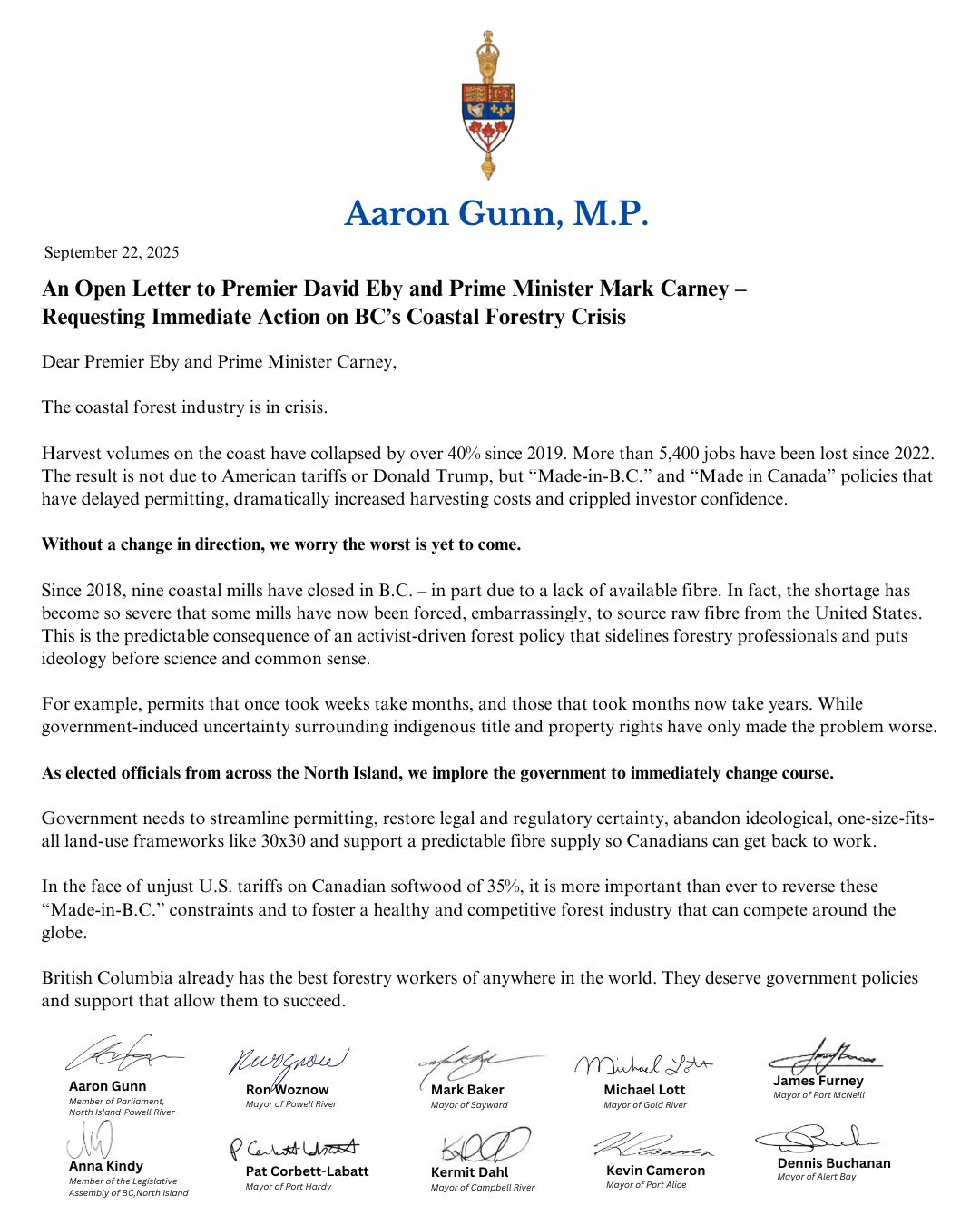

 Fall issue of WorkSafe Magazine
Fall issue of WorkSafe Magazine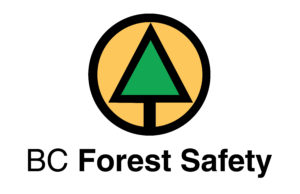 REVELSTOKE, BC — A BC forestry worker was fatally injured while on the job last week, an industry safety group said Tuesday. “A skidder operator was fatally injured when their skidder rolled down a steep slope in an area north of Revelstoke,” the BC Forest Safety Council said of the Sept. 16 incident. “WorkSafeBC and the Coroners Service are currently investigating this incident.” It’s the fifth harvesting fatality in 2025 and BC Forestry said details are still to be determined. Contributing factors to the incident are not available during an ongoing investigation. The BC Forest Safety Council said they have several safety points to be considered as the process unfolds. Those include a thorough assessment before work begins to prepare operators for steep slope logging operations. …Maintain safety buffers by not operating on the steepest possible slopes. This helps operators recover when surprised by an unexpected event.
REVELSTOKE, BC — A BC forestry worker was fatally injured while on the job last week, an industry safety group said Tuesday. “A skidder operator was fatally injured when their skidder rolled down a steep slope in an area north of Revelstoke,” the BC Forest Safety Council said of the Sept. 16 incident. “WorkSafeBC and the Coroners Service are currently investigating this incident.” It’s the fifth harvesting fatality in 2025 and BC Forestry said details are still to be determined. Contributing factors to the incident are not available during an ongoing investigation. The BC Forest Safety Council said they have several safety points to be considered as the process unfolds. Those include a thorough assessment before work begins to prepare operators for steep slope logging operations. …Maintain safety buffers by not operating on the steepest possible slopes. This helps operators recover when surprised by an unexpected event.